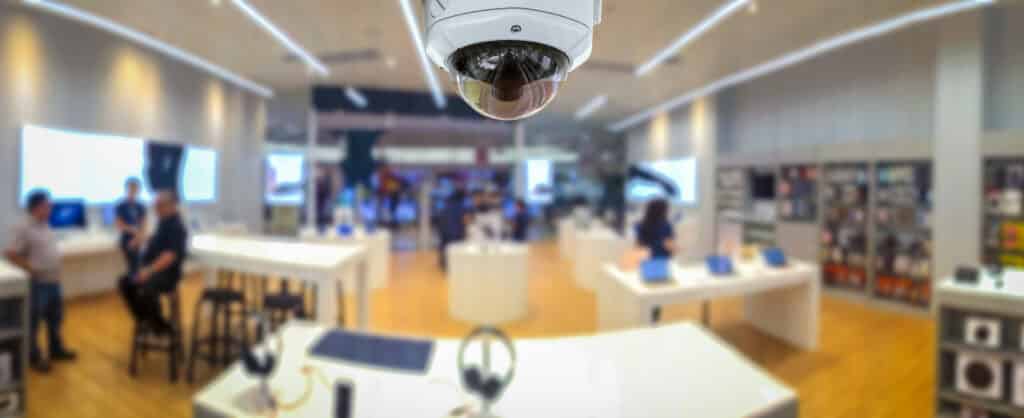Over 3370 burglaries happen daily in the USA, and these burglaries affect both residential and commercial properties. As an employer, it’s your responsibility to provide security to keep your data, assets, and people safe.
But how do you ensure your office security is accessible and safe?
Keep reading as we discuss secure, accessible, and inclusive office elements that help you protect your commercial property.
Contents
Window And Door Installation
When designing or looking for an accessible and safe office, entry points are pivotal. The number of entry points should be enough to facilitate easy access to the building without leaving you vulnerable and making security duties more difficult. You should also provide accessible entry points for disabled employees, such as ramps and lifts.
When considering the number of windows, you should recognize the importance of natural light for employee health and well-being. A dimly lit office can compromise employees’ eye health and can lower their mood. You should ensure there are enough windows to naturally light your office without presenting a security risk due to the potential for broken glass.
Cloud-Based Access Control
Access control is the cornerstone of any office security strategy. Only authorized personnel can enter your office space while keeping intruders out. In recent years, many offices have switched to cloud-based and mobile-first access control solutions due to their convenience.
Cloud-based security systems allow security staff and system administrators to easily view security data from anywhere, creating more agility and convenience for security management. This allows you to hire disabled staff members for your security and reception teams, opening up the realms of inclusivity within your workplace.
Here are some of the ways cloud-based access control can improve daily building operations for disabled persons in your office:
- Mobile credentials – It can be costly to reissue keycards and fobs when your employees lose them. With cloud-based access solutions, you have the option of using digital keycards. Your employees can download these keycards to their devices and use them to enter the building. Not only does this reduce replacement costs, but makes the onboarding process much more manageable.
- Touchless entry – Mobile access control provides more hygiene and convenience for building entry. It allows users to enter the building by waving their hand over the access control reader. This motion will trigger the access reader to communicate remotely with their device and unlock the door. Users don’t need to push a button, which can encourage the spread of germs. They can enter instantly without rooting in their pockets to remove their devices.
- First-time entry – To reduce the number of failed entry attempts, mobile access control uses three communication methods. With wifi, Bluetooth, and cellular communication, there is no chance of failed entry attempts, ensuring traffic flows smoothly throughout your building.
- Remote operation – Using a mobile application or browser-based control center, your security staff can remotely operate door locks, allowing visitors and employees to enter. This reduces time wasted traveling to the building’s entrance to permit entry, maximizing your staff’s time.
With all these benefits, it’s hard to see why you wouldn’t use cloud-based and mobile-first access control. Cloud-based security technologies are the foundation of modern office security.
Cloud-Based Security Cameras
Cloud-based commercial security cameras reduce some of the vulnerabilities in on-premise systems. Here are the common issues with on-premise security cameras:
- Tricky installation – To install on-premise systems, you must provide complex wiring infrastructure to connect devices with your security monitors and a power source. This requires a lot of planning.
- Limited visibility – your security staff will only be able to check security camera footage inside the monitor room, which means they could miss something important. This isn’t compatible with an inclusive workplace and does not factor in a limited range of movement.
Here’s how cloud-based security cameras can make your security infrastructure more convenient and accessible:
- No wires – Cloud-based cameras connect via Bluetooth, and you can invest in rechargeable hardware. So, there’s no need to get floor plans out and start drilling holes.
- Mobile app – Cloud-based cameras come with a mobile application that allows your security staff to check security cameras from anywhere. This means they’ll be less likely to miss essential security events.
- Open API integrations – Cloud-based cameras facilitate integration. You can integrate them with other security tools to make all your security data available on a user-friendly interface. You can apply software integrations like automated threat detection to ensure your team doesn’t miss anything.
Summary
Innovations and developments are revolutionizing modern office security. By educating yourself on the latest security technologies, you can build a security infrastructure that offers convenience and accessibility. Consider which of the security tools listed above would make security more accessible for both your security staff and your employees.

